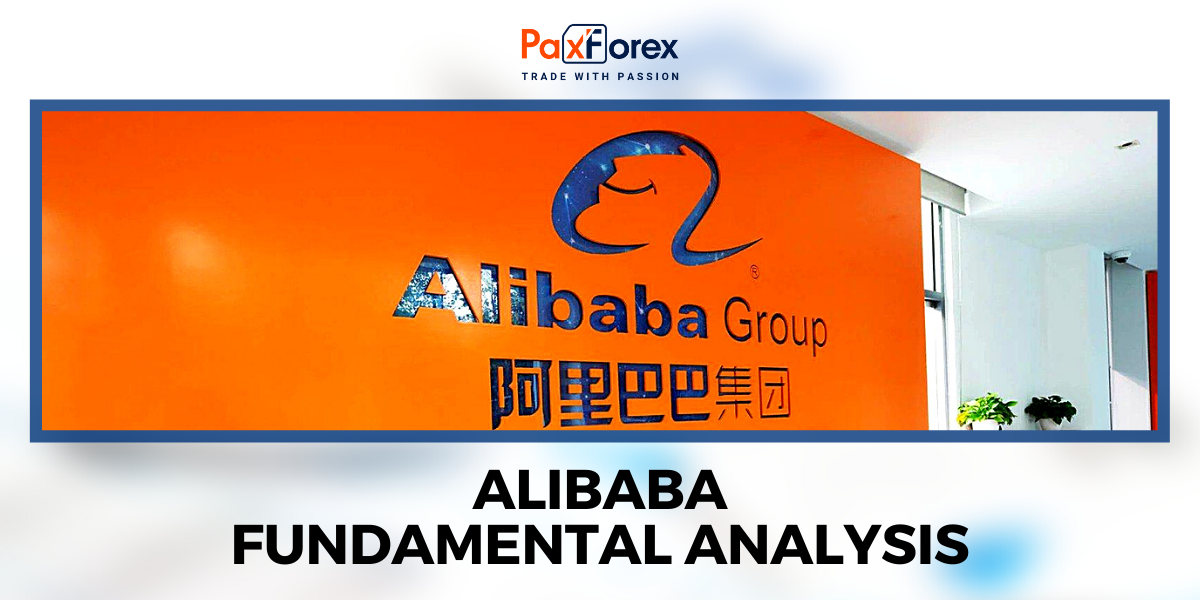
Source: PaxForex Premium Analytics Portal, Fundamental Insight
Since late 2020, Alibaba has been experiencing underperformance triggered by the blocking of Ant Group's IPO, its financial arm, following disrespectful remarks made by founder Jack Ma towards Chinese financial officials.
Despite witnessing a decline of over 70% from its peak, the company's stock continued to trail behind the market during the first half of 2023 due to sluggish growth caused by macroeconomic challenges in China, even as the country shifted away from its zero-COVID policy. Although the decision to split the company into six separate entities provided a slight boost, it fell short of pushing the stock into positive territory.
According to data from S&P Global Market Intelligence, the stock concluded the first half of 2023 with a 5% decrease, significantly lagging behind the S&P 500's gain of 15.9%.
Examining the chart, it is evident that the stock initially rallied amid indications that the regulatory crackdown on the tech industry had subsided. However, those gains quickly dissipated.
In early January, Alibaba's stock experienced a strong start as signs of a détente with Xi Jinping's government emerged, suggesting the end of a campaign to curb the market dominance of tech giants like Alibaba and Tencent. An upgrade to a conviction buy rating by Goldman Sachs further bolstered the stock, with analyst Ronald Keung expressing confidence that Alibaba had overcome its most challenging phase.
However, these initial gains gradually diminished as Alibaba approached its December quarter report, released near the end of February. Although the company slightly surpassed expectations on both revenue, reaching $35.9 billion with a 2% increase, and adjusted earnings per share, rising 14% to $2.79, the stock continued to decline.
Following a relatively quiet period in March, the stock experienced a surge at the end of the month when Alibaba announced its intention to split into six distinct businesses while retaining complete ownership of its core e-commerce entities, such as Taobao and Tmall.
Once again, these gains proved temporary, as the stock faced another decline after its earnings report in May. Despite a 2% revenue growth to $30.3 billion and a 35% rise in adjusted earnings per share to $1.56, the stock faltered once more.
In July, Alibaba's stock experienced an upward movement in response to reports indicating that Ant Group would face a fine of approximately $1 billion, marking the conclusion of a lengthy investigation into the company. This development also held the potential to pave the way for Ant Group to explore an initial public offering (IPO).
Despite the perceived benefits of the company's breakup in terms of creating shareholder value, Alibaba's stock is expected to remain stagnant until the company discovers a strategy to reignite revenue growth. Currently, achieving this goal appears challenging; however, analysts anticipate a potential improvement in the second half of the year.
.
As long as the price is above 85.00, follow the recommendations below:
- Time frame: D1
- Recommendation: long position
- Entry point: 93.88
- Take Profit 1: 98.00
- Take Profit 2: 105.00
Alternative scenario:
f the level of 85.00 is broken-down, follow the recommendations below:
- Time frame: D1
- Recommendation: short position
- Entry point: 85.00
- Take Profit 1: 82.00
- Take Profit 2: 78.00













